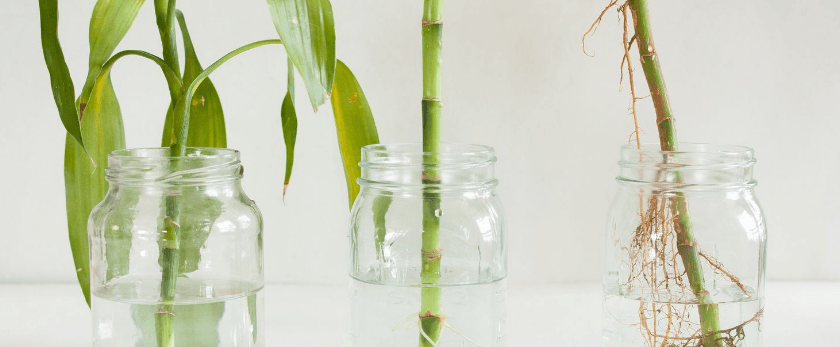Bamboo is a versatile and sustainable plant that has been used for centuries in various cultures for its strength, beauty, and practicality. It is also a great addition to any garden, as it can provide shade, privacy, and a touch of exoticism. However, many people are intimidated by the idea of growing bamboo, as it is often associated with being invasive and difficult to control. In this article, we will guide you through the process of growing bamboo shoots in a responsible and sustainable manner, so you can enjoy the benefits of this amazing plant without harming the environment.
What is Bamboo?
Bamboo is a type of grass that belongs to the Poaceae family. It is one of the fastest-growing plants in the world, with some species growing up to 91 cm (35 inches) in just 24 hours! There are over 1,500 species of bamboo, and they can be found in various climates and regions, from tropical to temperate. Bamboo is known for its strength and flexibility, making it a popular material for construction, furniture, and even clothing.
How to Care for Bamboo Shoots
Watering
Bamboo is a thirsty plant, and it requires regular watering to thrive. However, it is important to find a balance, as overwatering can lead to root rot and other problems. The frequency of watering will depend on the climate and the type of soil you have. In general, bamboo should be watered deeply once or twice a week, depending on the weather. During hot and dry periods, you may need to water more frequently.
Light
Bamboo is a sun-loving plant, and it needs at least 6 hours of direct sunlight per day to grow properly. However, some species can tolerate partial shade, so make sure to research the specific needs of the bamboo you are growing. If you are growing bamboo indoors, make sure to place it near a window that receives plenty of sunlight.
Soil
Bamboo can grow in a variety of soils, but it prefers well-draining, fertile soil. It is important to avoid compacted or waterlogged soil, as it can lead to root rot. If you have heavy clay soil, you can amend it with organic matter, such as compost or manure, to improve drainage and provide nutrients for the plant.
Fertilizer
Bamboo is a heavy feeder, and it requires regular fertilization to grow strong and healthy. You can use a balanced fertilizer, such as a 10-10-10 or 20-20-20, once a month during the growing season. Alternatively, you can use organic fertilizers, such as compost or manure, which will also improve the soil quality.
Pruning
Pruning is an important part of caring for bamboo, as it helps to control its growth and prevent it from becoming invasive. It is best to prune bamboo in late winter or early spring, before new growth appears. You can use sharp pruning shears to remove any dead, damaged, or weak canes. You can also thin out the clump by removing some of the older canes from the base. This will allow more light and air to reach the center of the plant, promoting healthy growth.
What is the Best Time to Grow Bamboo Shoots?
The best time to grow bamboo shoots is in the spring, when the soil is starting to warm up and the risk of frost has passed. This will give the plant enough time to establish its roots before the hot summer months. However, some species can also be planted in the fall, as long as the soil is not frozen.

Common Problems with Bamboo Shoots
Invasive Growth
One of the biggest concerns with growing bamboo is its potential to become invasive. Some species of bamboo can spread quickly and take over an area, crowding out other plants. To prevent this, it is important to choose a clumping variety of bamboo, rather than a running variety. Clumping bamboo grows in tight, compact clumps, while running bamboo spreads through underground rhizomes. You can also install a root barrier around the bamboo to contain its growth.
Pests and Diseases
Bamboo is generally a hardy plant, but it can be susceptible to certain pests and diseases. Some common pests that can affect bamboo include aphids, mealybugs, and spider mites. These can be controlled with insecticidal soap or neem oil. As for diseases, root rot is the most common problem, which can be prevented by ensuring proper drainage and avoiding overwatering.
Disposal of Bamboo Waste
When pruning or removing bamboo, it is important to dispose of the waste responsibly. Bamboo can be composted, but it may take a long time to break down. Alternatively, you can use the bamboo canes for various DIY projects, such as building trellises or fences. If you are unable to use or compost the bamboo waste, make sure to dispose of it in a designated green waste bin or take it to a local composting facility.
Conclusion
Growing bamboo shoots can be a rewarding and sustainable addition to your garden. By following these tips and guidelines, you can enjoy the beauty and benefits of bamboo without harming the environment. Remember to choose a clumping variety, provide adequate care, and dispose of waste responsibly. With proper care, your bamboo will thrive and provide you with years of enjoyment. Happy gardening!










